This article needs additional citations for verification .(February 2016) |
The Kodansha Encyclopedia of Japan is a comprehensive English-language encyclopedia first published in 1983 that covers a broad range of topics on Japan. [1]
This article needs additional citations for verification .(February 2016) |
The Kodansha Encyclopedia of Japan is a comprehensive English-language encyclopedia first published in 1983 that covers a broad range of topics on Japan. [1]
First published by Kodansha in 1983 followed by a supplemental volume in 1986. A two-volume updated edition, [2] and a one-volume abridged (and updated) edition were published in 1993. The latter was the basis of the online version, which as of June 2010, is no longer available as a free-standing site. It can still be accessed through the JapanKnowledge database.
The encyclopedia was created by both Japanese (680) and non-Japanese scholars (524) from 27 nations. Some of the advisors to the Kodansha Encyclopedia of Japan included Edwin O. Reischauer, Gerald L. Curtis, Ronald P. Dore, John W. Hall, Ezra Vogel, Akira Iriye, and Tsuru Shigeto. Japanese scholars produced 40 percent of the text, while foreign scholars wrote the remaining 60 percent. Japanese and American scholars wrote the majority of the articles. Many articles are English translations from Japanese encyclopedias.
There are more than 11,000 entries covering 37 categories of information. These include encyclopedia standards such as history, literature, art, religion, economy, and geography. In addition, science, technology, law, women, folklore, plant and animal life, food, clothing, sports, and leisure are given separate categories. It also contains roughly 1000 illustrations in the form of photographs, maps, diagrams, graphs, charts and tables. The ninth index volume contains names and words mentioned within the encyclopedia, but not assigned separate entries.
To accommodate a wide audience, from students to businessmen and diplomats, articles were written with the dual purpose of introducing topics at a level appropriate for a high-school student and provide a good starting point for more advanced students with some knowledge of Japan.
Numerous articles are no more than a paragraph. However, more general headings such as "History of Japan" have as many as 70,000 words. Many are signed, especially the longer ones. A lot of articles are followed by suggestions for further readings in English, Japanese, and occasionally other languages. Japanese names are given in Japanese order (family names first).
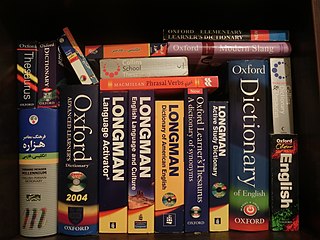
A dictionary is a listing of lexemes from the lexicon of one or more specific languages, often arranged alphabetically, which may include information on definitions, usage, etymologies, pronunciations, translation, etc.. It is a lexicographical reference that shows inter-relationships among the data.
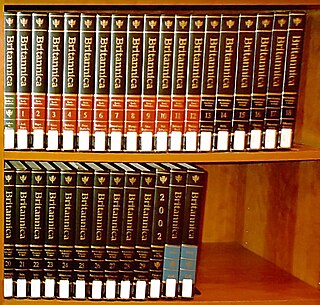
An encyclopedia, encyclopædia, or encyclopaedia is a reference work or compendium providing summaries of knowledge either from all branches or from a particular field or discipline. Encyclopedias are divided into articles or entries that are often arranged alphabetically by article name and sometimes by thematic categories. Encyclopedia entries are longer and more detailed than those in most dictionaries. Generally speaking, encyclopedia articles focus on factual information concerning the subject named in the article's title; this is unlike dictionary entries, which focus on linguistic information about words, such as their etymology, meaning, pronunciation, use, and grammatical forms.

The Encyclopædia Britannica is a general knowledge English-language encyclopaedia which is now published exclusively as an online encyclopaedia. It was formerly published by Encyclopædia Britannica, Inc., and other publishers. It was written by about 100 full-time editors and more than 4,000 contributors. The 2010 version of the 15th edition, which spans 32 volumes and 32,640 pages, was the last printed edition.

The Encyclopædia Britannica Eleventh Edition (1910–1911), is a 29-volume reference work, an edition of the Encyclopædia Britannica. It was developed during the encyclopaedia's transition from a British to an American publication. Some of its articles were written by the best-known scholars of the time. This edition of the encyclopaedia, containing 40,000 entries, is now in the public domain, and many of its articles have been used as a basis for articles in Wikipedia. However, the outdated nature of some of its content makes its use as a source for modern scholarship problematic. Some articles have special value and interest to modern scholars as cultural artefacts of the 19th and early 20th centuries.

Encyclopedia Americana is a general encyclopedia written in American English. It was the first major multivolume encyclopedia that was published in the United States. Following the acquisition of Grolier in 2000, the encyclopedia has been produced by Scholastic.
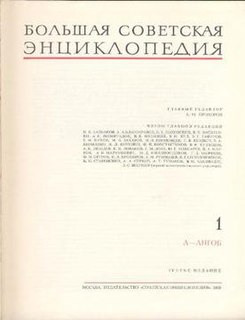
The Great Soviet Encyclopedia is one of the largest Russian-language encyclopedias, published in the Soviet Union from 1926 to 1990. After 2002, the encyclopedia's data was partially included into the later Bolshaya Rossiyskaya entsiklopediya in an updated and revised form. The GSE claimed to be "the first Marxist–Leninist general-purpose encyclopedia".

The Encyclopedia of Mormonism is a semi-official English-language encyclopedia for topics relevant to The Church of Jesus Christ of Latter-day Saints. The five-volume texts have been digitized and are available for free online via the Harold B. Lee Library's official website.

The Encyclopaedia Judaica is a 22-volume English-language encyclopedia of the Jewish people and of Judaism. It covers diverse areas of the Jewish world and civilization, including Jewish history of all eras, culture, holidays, language, scripture, and religious teachings. As of 2010, it had been published in two editions accompanied by a few revisions.
The Nihon kokugo daijiten (日本国語大辞典), often abbreviated as the Nikkoku (日国) and sometimes known in English as Shogakukan's Japanese Dictionary, is the largest Japanese language dictionary published. In the period from 1972 to 1976, Shogakukan published the 20-volume first edition. The 14-volume second edition was published in the period from November 2000 to December 2001. It includes substantial additions to and improvements over the first edition.

An encyclopedic dictionary typically includes many short listings, arranged alphabetically, and discussing a wide range of topics. Encyclopedic dictionaries can be general, containing articles on topics in many different fields; or they can specialize in a particular field, such as art, biography, law, medicine, or philosophy. They may also be organized around a particular academic, cultural, ethnic, or national perspective.
Sarpay Beikman originated as the Burmese Translation Society. Its first President was Prime Minister U Nu, who started a Burmese translation job at Judson College. The purpose was to translate world culture, literature, education for the Burmese public. In 1963 the society was absorbed into the Ministry of Information's Printing and Publishing Enterprise as the Sarpay Beikman Literature House, and the mandate was extended to encourage local writers and to print and publish books of all types. The society presents the annual Sarpay Beikman Manuscript Awards and Burma National Literature Awards for excellent new unpublished and published writing in various categories.
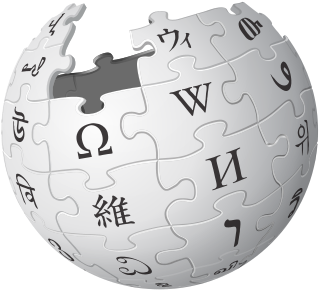
Wikipedia is a free content, multilingual online encyclopedia written and maintained by a community of volunteers through a model of open collaboration, using a wiki-based editing system. Individual contributors, also called editors, are known as Wikipedians. It is the largest and most-read reference work in history. It is consistently one of the 15 most popular websites ranked by Alexa; as of 2021, Wikipedia was ranked the 13th most popular site. It is hosted by the Wikimedia Foundation, an American non-profit organization funded mainly through donations.
Daijirin is a comprehensive single-volume Japanese dictionary edited by Akira Matsumura, and first published by Sanseido Books in 1988. This title is based upon two early Sanseidō dictionaries edited by Shōzaburō Kanazawa, Jirin and the revised Kōjirin.
The Daijisen is a general-purpose Japanese dictionary published by Shogakukan in 1995 and 1998. It was designed as an "all-in-one" dictionary for native speakers of Japanese, especially high school and university students.
The Nihongo Daijiten is a color-illustrated Japanese dictionary edited by Tadao Umesao and published by Kodansha in 1989 and 1995.

The J. R. R. Tolkien Encyclopedia: Scholarship and Critical Assessment, edited by Michael D. C. Drout, was published by Routledge in 2006. A team of 127 Tolkien scholars on 720 pages cover topics of Tolkien's fiction, his academic works, his intellectual and spiritual influences, and his biography. Co-editors were Douglas A. Anderson, Verlyn Flieger, Marjorie Burns and Tom Shippey.
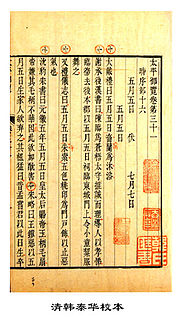
Chinese encyclopedias comprise both Chinese-language encyclopedias and foreign-language ones about China or Chinese topics. There is a type of native Chinese reference work called leishu that is sometimes translated as "encyclopedia", but although these collections of quotations from classic texts are expansively "encyclopedic", a leishu is more accurately described as a "compendium" or "anthology". The long history of Chinese encyclopedias began with the Huanglanleishu and continues with online encyclopedias such as the Baike Encyclopedia.

Microsoft Encarta was a digital multimedia encyclopedia published by Microsoft from 1993 to 2009. Originally sold on CD-ROM or DVD, it was also available on the World Wide Web via an annual subscription, although later articles could also be viewed for free online with advertisements. By 2008, the complete English version, Encarta Premium, consisted of more than 62,000 articles, numerous photos and illustrations, music clips, videos, interactive content, timelines, maps, atlases and homework tools.
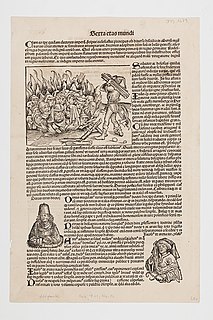
Encyclopedias have progressed from the beginning of history in written form, through medieval and modern times in print, and most recently, displayed on computer and distributed via computer networks.
Japan Encyclopedia is an encyclopedia that covers a broad range of topics on Japan.